Malnutrition is a significant health problem for the population of Ethiopia in general, and women and children in particular. Although malnutrition rates have declined in recent years, they remain extremely high among children under five. The Growing Nutrition for Mothers and Children in Ethiopia project (GROW) aimed to improve nutrition for women of reproductive age and young children in the Afar and Oromia regions of Ethiopia.
This photo essay features some of the participants in GROW involved in project activities and showcasing the impact it had on their lives.
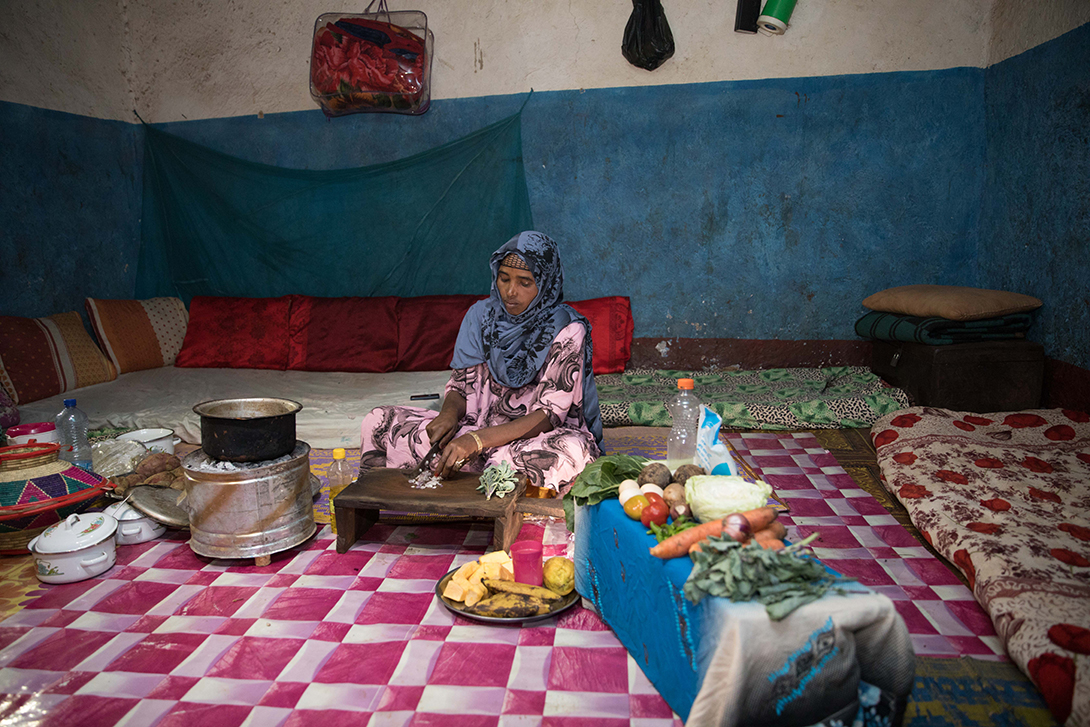

Iftu Umer used to spend a lot of money on medical treatment for her children, as they were often getting sick. Through GROW, she learned about the benefits of eating a diverse diet and strengthened her cooking skills. As a result, she and her family have been eating more vegetables and other healthy foods and she says her youngest child has managed to stay healthy and avoid illness.
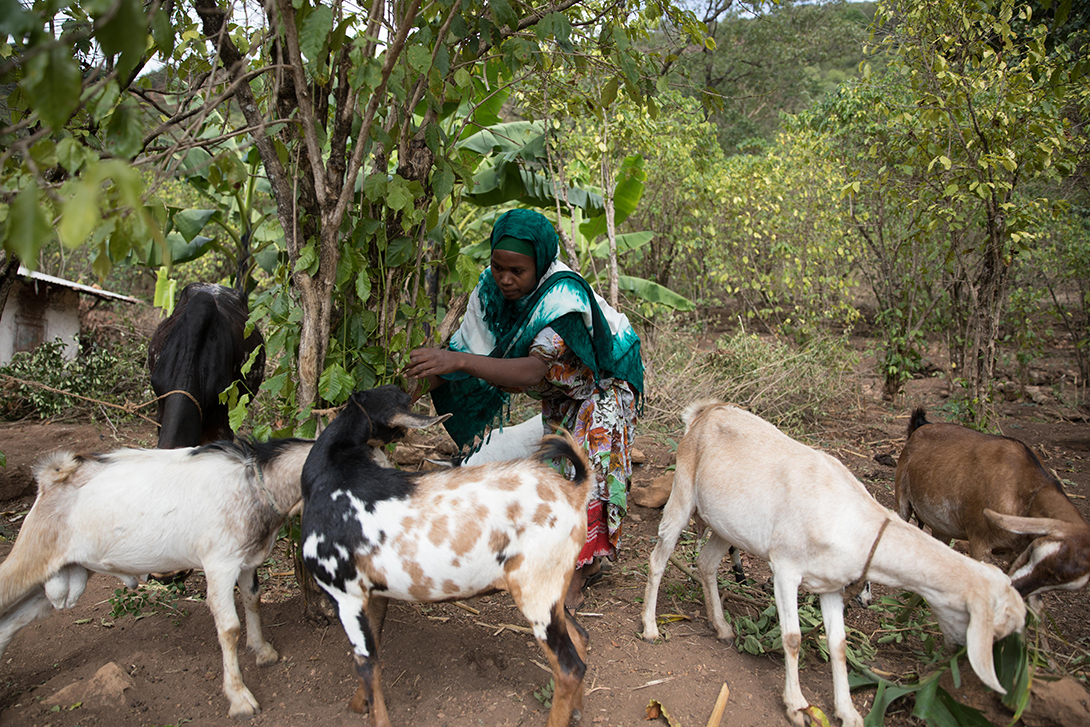

Bire Minda used to wait until it was dark outside to defecate in the bushes, as she wanted to go in privacy and saw no other option. Over the course of the GROW project, she learned about the health hazards associated with open defecation and how to build and maintain a latrine and a tip-tap handwashing device. She said now that her family has those things, “we are harvesting many social and health benefits.”


Sergut Abera, mother of three, showcases part of the large harvest from her household garden. She was trained on maternal nutrition and feeding practices as part of GROW.
“I was taught in my community that consuming foods such as fruits and eggs would have a harmful effect on a newborn,” she explained, but her perspective changed after taking the training.
Now she eats two extra meals a day with added milk, eggs, fruit, and home-grown vegetables. As food production increased among people participating in GROW, the surplus was usually either shared with neighbours or sold in markets, becoming an appreciated source of income for participants.
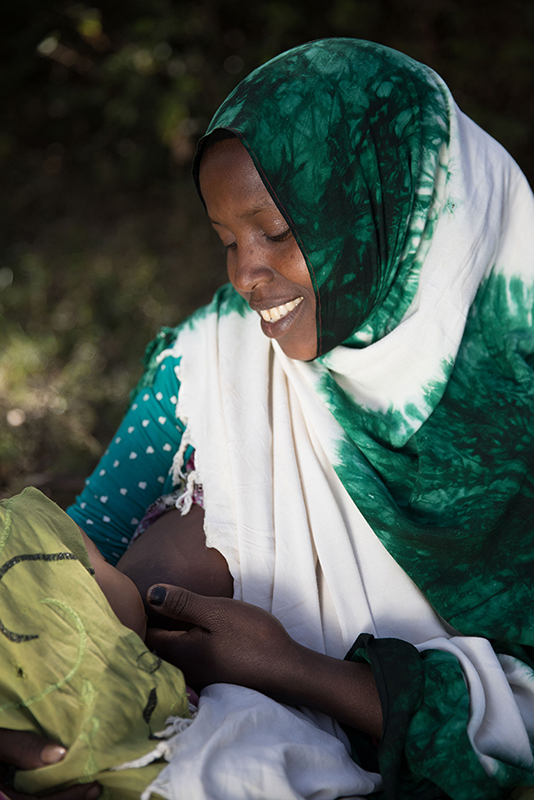

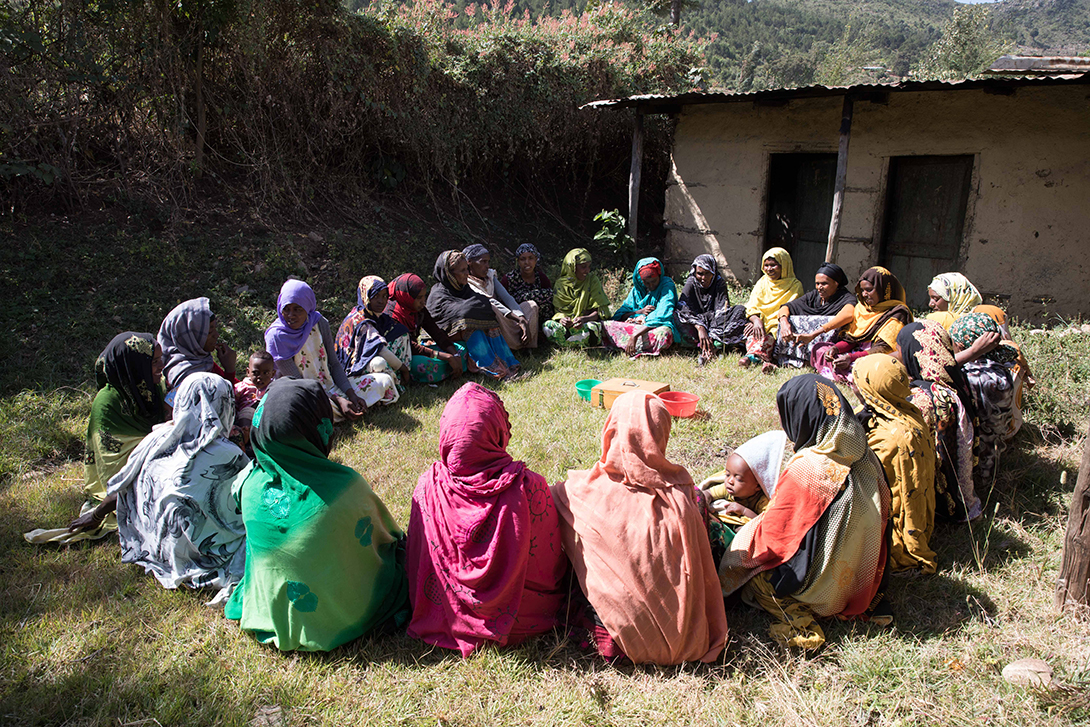

[Left] Fatuma Hussen began practicing exclusive breastfeeding with her three youngest children. She noticed a clear difference in their health compared to her first children, who were often ill. She found that her the youngest three were often able to withstand simple infections and outbreaks. Fatuma credited this change to what she learned in mother-to-mother (M2M) discussion sessions, created as part of the GROW project from the existing Ethiopian development army structure.
[Right] Here is one of the GROW mother-to-mother discussion (M2M) groups. M2M groups met bi-weekly to discuss topics related to maternal, infant, and child nutrition and feeding. Along with father-to-father (F2F) groups, leaders and participants worked to support identification of acute malnutrition cases and made referrals for treatment as necessary.
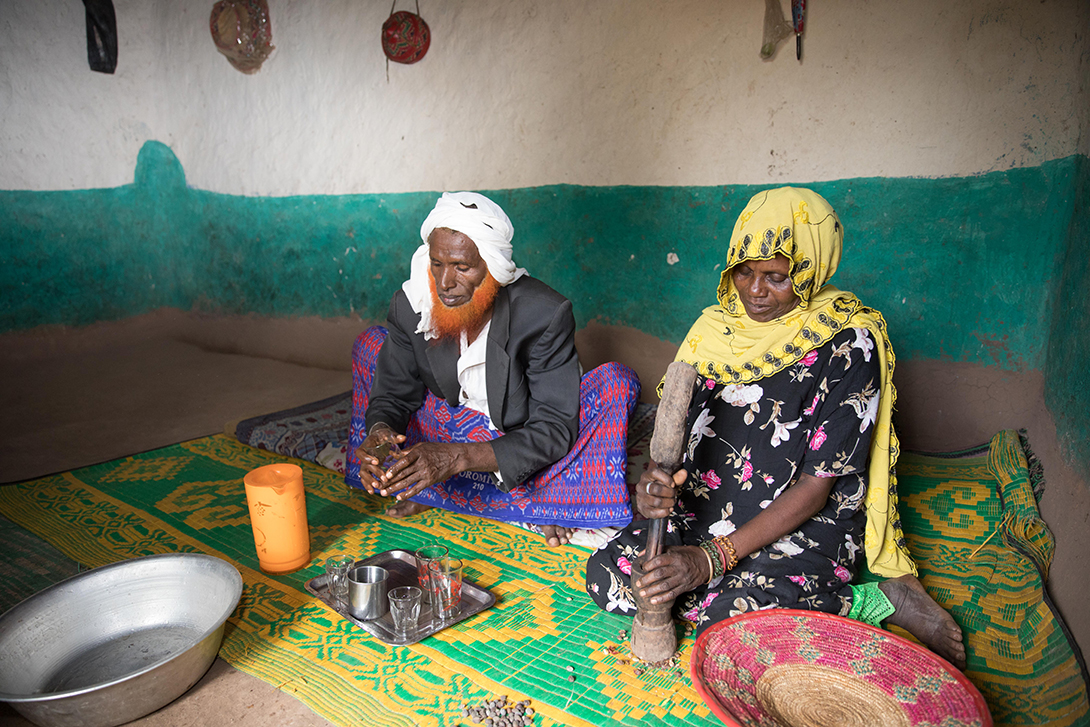

Shek Kadir, a religious leader and father of eight, used to believe only weak husbands would help their wife with domestic chores or let them speak in public. After participating in Social Analysis and Action (SAA) community dialogue sessions facilitated through the GROW project, his perspective started to change. He has become an active promoter of men’s involvement in household chores and women’s leadership.
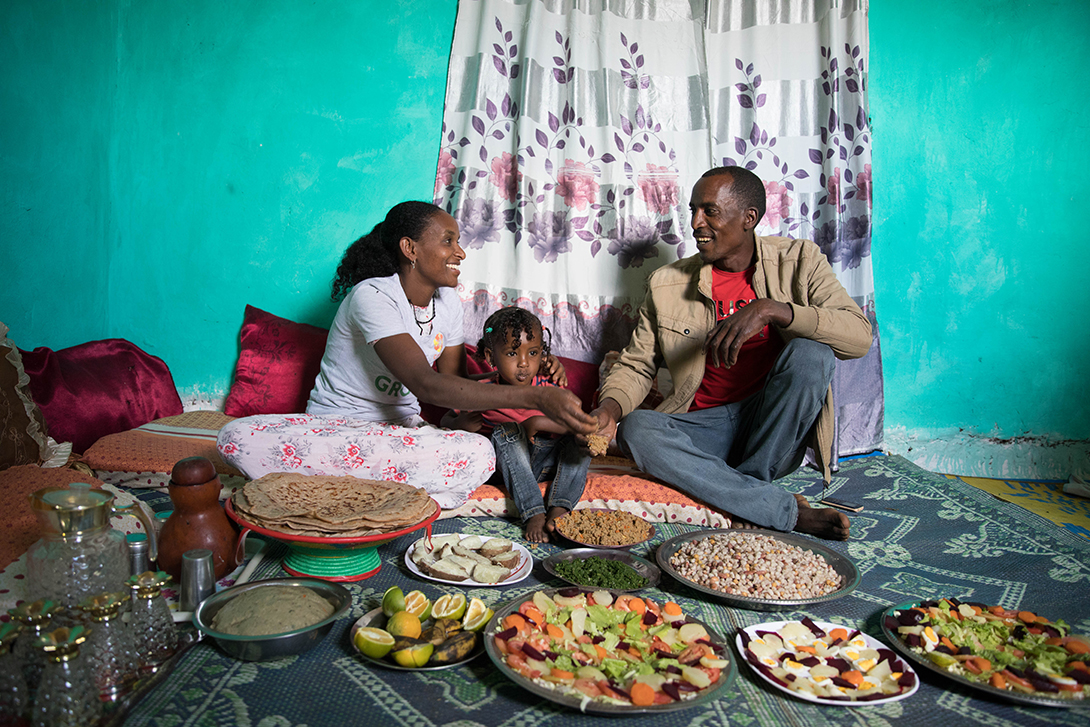

Sekina Usman and her husband saw their relationship grow closer and more positive after participating in GROW.
“We had a master-servant relationship,” she explained. “We never used to eat together nor had savings. CARE’s F2F and SAA dialogues transformed my husband and brought a rebirth in my relations with him and other community women.”

